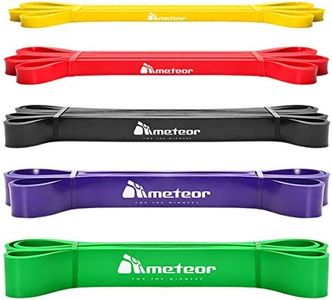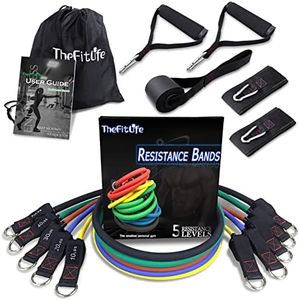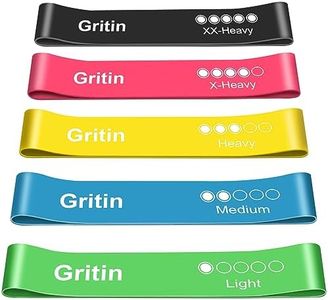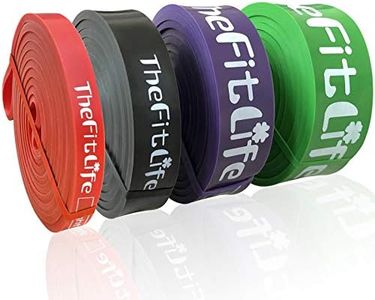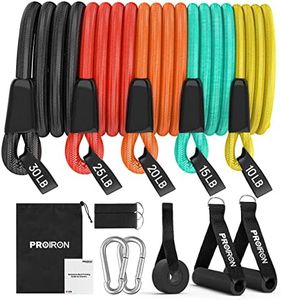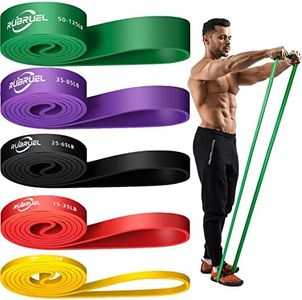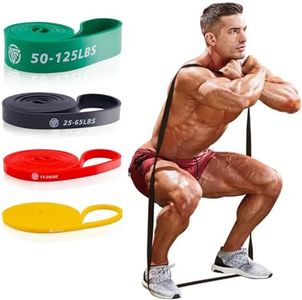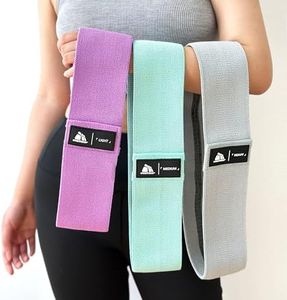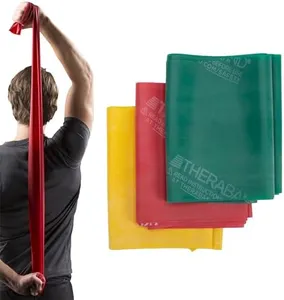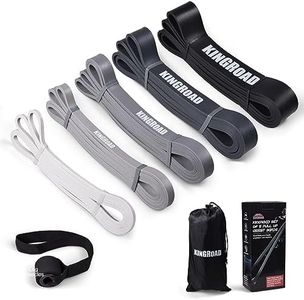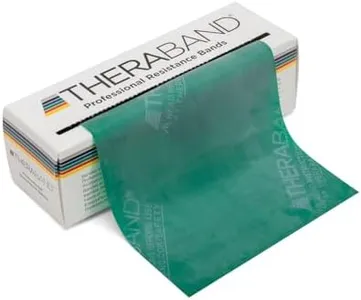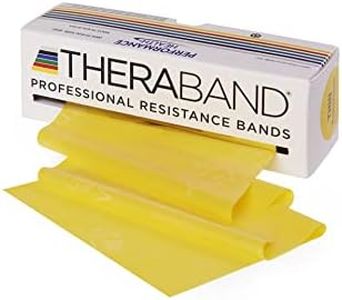We Use CookiesWe use cookies to enhance the security, performance,
functionality and for analytical and promotional activities. By continuing to browse this site you
are agreeing to our privacy policy
10 Best Resistance Bands
From leading brands and best sellers available on the web.Buying Guide for the Best Resistance Bands
When choosing resistance bands, it's important to focus on finding a set that matches your fitness goals, current strength level, and how you intend to use them. Resistance bands are popular for their versatility—they can help with strength training, stretching, physical therapy, and mobility exercises. Before you buy, think about what exercises you want to do, whether you'll use them at home or on the go, and how much resistance you need to challenge yourself but still maintain good form.Resistance LevelResistance level refers to how much force is needed to stretch the band, often measured as light, medium, heavy, or extra heavy. Some brands use colors to show the different strengths. This is crucial because it determines how challenging your exercises will be. Lighter resistance is usually better for beginners, rehabilitation, or mobility work, while heavier bands are best for building muscle and for stronger users. If you're not sure, start with a mixed set so you can switch bands as you get stronger or use different ones for various body parts.
Band TypeThere are several types of resistance bands, including loop bands, tube bands with handles, therapy bands, and figure-eight bands. Loop bands are large continuous loops, great for lower body and glute workouts. Tube bands with handles are best for upper body exercises and can feel more like traditional gym equipment. Therapy bands are flat and thin, perfect for rehab and gentle stretching. Figure-eight bands work well for targeted resistance moves. Think about what kinds of exercises you enjoy, and choose the type that fits those workouts.
Material QualityMost resistance bands are made of latex, but some are latex-free for those with allergies. The material affects durability, stretch, and comfort. High-quality bands are less likely to snap or deform over time, which is important for safety. If you plan to use the bands frequently, pay attention to the material's feel, look for bands that advertise extra durability, and read reviews about longevity.
Length and SizeThe length and width of resistance bands can affect how you use them and who they’re best suited for. Shorter, smaller loop bands are ideal for exercises around your knees or ankles. Longer flat or tube bands are needed for moves like squats, chest presses, or stretching. If you are taller or want to do full-body exercises, go for longer bands. Smaller bands are better for focused, smaller muscle groups or rehab.
Accessories and AttachmentsSome resistance bands come with handles, door anchors, or ankle straps, making it easier to do a wider variety of exercises safely and comfortably. Handles are helpful for pulling movements or upper body work. Door anchors let you attach the bands to a door for rows or chest flies. Consider what kinds of exercises you want to try, and look for sets that include the right accessories for your workout style.
